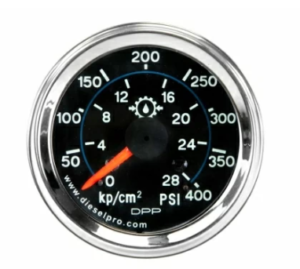⚠️ 5 Reasons Your Detroit Diesel May Have Low Engine Oil Pressure

Low engine oil pressure is one of the most critical warning signs you can encounter on a Detroit Diesel engine. In this video, Diesel Pro Power highlights 5 common causes that could be behind this issue—providing a helpful visual guide for diagnosis and awareness.
Why Oil Pressure Matters
Oil pressure is essential for proper lubrication, cooling, and the overall health of internal engine components. It ensures that a consistent layer of oil separates metal surfaces, reducing friction and preventing premature wear. In two-stroke Detroit Diesel engines—like the 53, 71, and 92 Series—adequate oil pressure is especially important because these engines rely on high-revving operation and tight mechanical tolerances. If pressure drops too low, even momentarily, it can lead to bearing damage, piston scoring, camshaft or crankshaft failure, and ultimately catastrophic engine failure. Maintaining the right oil pressure ensures that heat is properly dissipated from high-load zones, contaminants are carried away, and seals remain lubricated and intact. Understanding the root causes of pressure loss helps ensure early intervention, reduces repair costs, and extends engine life in both on-road and marine environments.
Who This Video Is For
This quick visual breakdown is ideal for technicians, fleet operators, and hands-on diesel owners who are troubleshooting low oil pressure issues in classic two-stroke Detroit Diesel engines. Whether you’re servicing a 53, 71, or 92 Series engine on a commercial fishing vessel, a generator, or a work truck, the visual guide offers a fast and clear explanation of the most common culprits behind oil pressure loss. It’s particularly helpful for those who need to differentiate between symptoms caused by wear and those caused by external factors like contamination or overload—allowing faster, more accurate diagnostics.
5 Causes of Low Oil Pressure
-
Water in the Engine Oil Pan
Water contamination reduces oil viscosity and compromises its ability to maintain a stable film between engine components. Even a small amount of water can cause foaming and loss of hydraulic pressure, increasing the risk of metal-on-metal contact. This is often caused by blown head gaskets, cracked cylinder liners, leaking oil cooler cores, or compromised coolant seals. In marine engines, water intrusion can also occur through faulty exhaust systems or improperly vented crankcases. A milky appearance in the oil or rising coolant levels are early signs of this condition.
-
Fuel in the Engine Oil Pan
Leaking fuel injectors, worn injector o-rings, or faulty fuel pump seals can allow diesel fuel to enter the crankcase and dilute the oil. This lowers the oil’s viscosity, reducing its ability to build pressure and lubricate internal components. A common symptom is an overfilled crankcase accompanied by a noticeable diesel odor in the oil. In severe cases, this condition can lead to rapid bearing failure or a runaway engine if combustion chamber oil contamination occurs.
-
Defective Oil Cooler
The oil cooler regulates oil temperature to maintain optimal flow characteristics. A defective or restricted oil cooler may not dissipate heat effectively, leading to excessively thin oil under high operating temperatures, which in turn lowers pressure. In cold conditions, a malfunctioning bypass valve within the cooler can cause excessive restriction, resulting in poor oil circulation and pressure drop. Internally leaking oil coolers may also cross-contaminate the oil with coolant.
-
Engine Overloaded
Operating the engine at or beyond its rated capacity for extended periods increases internal friction and thermal load. This leads to increased oil shear, where the oil film breaks down under stress. As a result, the oil loses pressure, especially in high-clearance areas like the main bearings and camshaft journals. Overloading can also accelerate component wear, causing widened clearances that further reduce oil pressure. This issue is common in marine engines that are underpropped or in land-based equipment being pushed beyond its design limits.
-
Crankcase Overfilled
Adding too much oil may seem harmless, but overfilling can cause the crankshaft to whip the oil into foam, a condition known as aeration. Foamed oil contains air bubbles that collapse under pressure, disrupting consistent oil flow and starving bearings of lubrication. This results in erratic oil pressure readings and increased risk of overheating and mechanical damage. It may also cause excessive oil consumption and crankcase ventilation issues.
⚠️ Important Reminder
This video is for demonstration purposes only. It does not include safety advice or step-by-step repair procedures. Always consult your Detroit Diesel service manual for proper diagnostics, torque specs, fluid levels, and repair instructions.
Need Detroit Diesel Parts?
From oil coolers and injectors to overhaul kits and gaskets, Diesel Pro Power has the parts and support to get your engine back to peak performance.
Detroit Diesel Engine Parts Catalog By Engine Model



 Free US Calls: 1-888-433-4735
Free US Calls: 1-888-433-4735 International: 305-545-5588
International: 305-545-5588